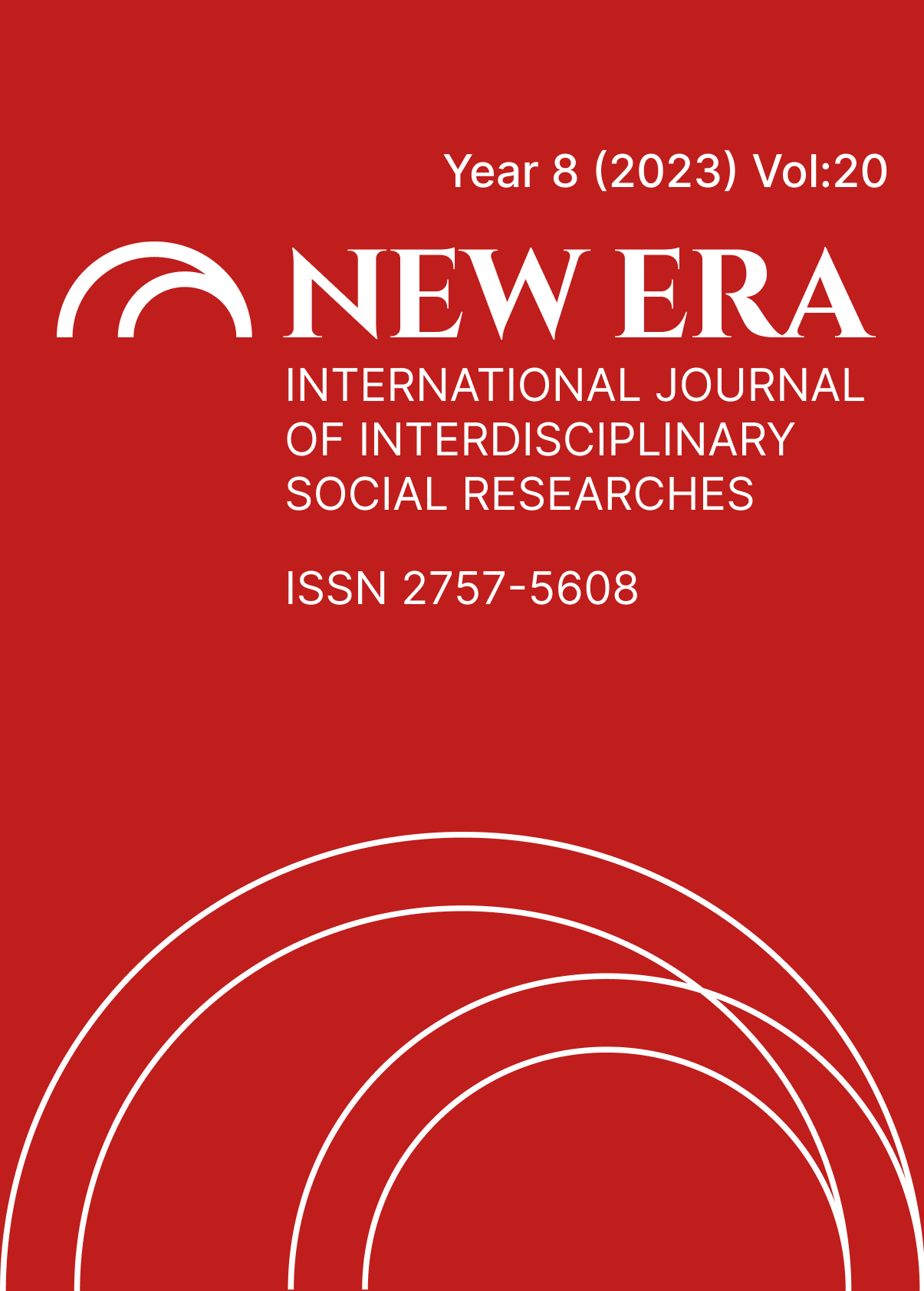THE MAIN SOURCE OF MILITARY EDUCATION: A PHILOSOPHICAL EVALUATION OF ORDER, AUTHORITY AND DISCIPLINE
DOI:
https://doi.org/10.5281/zenodo.8344812%20Keywords:
Military Education HistoryAbstract
The philosophical evaluation of the sources of Military Education, which was the beginning of modernization in the Ottoman Empire, is extremely important in terms of making sense of the military policies of the period. It is known that the history of Turkish Military Education is as old as Turkish history. In the historical process, the understanding of order of the Turkish Military system has been tightly intertwined from the smallest military unit to the largest armies, and the changes and innovations that have come together in the structure dominated by a permanent atmosphere of discipline continue to modernize today. The continuity of the military order created as a result of the concepts of discipline and authority was ensured by political balance in Turkish states. The heritage of military education, which was synthesized with the Asian tradition and the Islamic Conquests and shaped by the contributions of 16 Turkish states in history, was transferred to the Ottoman Empire. Adopting and developing these values, the Ottoman Empire became the world's superpower. However, in the following periods, the Ottoman Empire lagged behind the developments in Europe and thus military defeats became inevitable. In this study, the reasons why the military education system in the Ottoman Empire lagged Europe were evaluated and the effects of the philosophical methodology, ontological and epistemological development of the period were analyzed by following the theories and developments of national education based on the foundations of many ideas such as Kant, Hegel, Peitism, Pestalozzi, which started with the Neo Enlightenment and Industrial Revolution in the West.
References
Atay, Ender Ethem (2014). İdare Hukuku (4. Bası b.). Ankara: Seçkin Yayınevi.
Bal Hüseyin (2014). Siyaset Teorisinde Otorite Kavramı. Turkish Studies sayı:9/2. S. 247-255.
Berkes, Niyazi (2019). Türkiye’de Çağdaşlaşma Hareketleri, 29. Baskı, İstanbul: YKY. 33)
Bolay, Süleyman Hayri (2005). Osmanlıda Düşünce Hayatı ve Felsefe, Ankara: Akçağ Yayınları, s. 234.
Burçak, Berrak (2008). Modernization, Science and Engineering in the Early Nineteenth Century Ottoman Empire. Middle Eastern Studies, 44(1), 69-83. Erişim Adresi: http://www.jstor.org/stable/40262555.
Durmuş Eda (2020). Eski Türklerdeki Askeri Yapı. Asya Araştırmaları Dergisi. sayı:1.Cilt:4.
Fidan Serdal; Şahin, Kamil, Çelik, Fikret (2011). Osmanlı Modernleşmesinin Temel Olgularından Biri: Bürokrasi Osmanlı Modernleşmesinde Bürokrasinin Etkinliği ve Önemi. SDÜ Fen Edebiyat Fakültesi SDU Sosyal Bilimler Dergisi, Sayı: 23, 113-128.
Ergin Osman (1939). İstanbul Mektepleri ve İlim, Maarif Tarihi, C. 1-2, İstanbul: Osmanbey Matbaası.: 12,145.
Gür, Aysun (2016). Heidegger’de Düşünme Biçimlerinin Yazgıyla İlişkisi Üzerine, Felsefe Arşivi, 44. Sayı, 2016/I, 25-47
İsmet Parmaksızoğlu, “Enderun Mektebi”, Türkler Ansiklopedisi, Cilt XV, MEB Yay., İstanbul, 1971, s. 193.
Kafesoğlu İbrahim (1993), Türk Milli Kültürü, Boğaziçi Yay., İstanbul.
Kurt Deniz (2007). Türkiye’de Askeri Eğitimin Modernleşme Sürecinde Işıklar Askeri Lisesi. Marmara Üniversitesi Türkiyat Araştırmaları Enstitüsü.
ORKUN, Hüseyin Namık (1938). Hunlar, Ankara Tarık Edip Kitabevi, İstanbul.
Ögel Bahaeddin (1988). Türk Kültürünün Gelişme Çağları, TDAV Yay., Ankara, 1988, s. 661.
Öz, Mustafa; Kayaalp, Sadrettin ve Derçin, Aysun (2004). Liseler İçin Felsefe Tarihi Ders Kitabı, (Devlet Kitapları), İstanbul.
Parmaksızoğlu İsmet, “Enderun Mektebi”, Türkler Ansiklopedisi, Cilt XV, MEB Yay., İstanbul, 1971, s. 193.
Saltuklu Zübeyr (2019). Türklerde Töre. AUSBD, 2/4 s. 61-66.
Sencer, Muzaffer (1969). Osmanlı Toplumsal Yapısı, İstanbul: Ant Yayınları.s. 116, 314.
Somel, Akşin Selçuk (2015). Osmanlı’da Eğitimin Modernleşmesi (1839-1908) İslamlaşma, İstanbul: Otokrasi ve Disiplin, İletişim Yayınları, s.83, 254, 341.
Strauss Levi (2013) Claude. Mit ve Anlam. çev. Gökhan Yavuz Demir. İstanbul: İthaki Yayınları.
Szyliawicz, J. (1971). Elite Recruitment in Turkey, Role of The Mülkiye, World Politic, C.XIII April. 376)
Teke Mehmet Kasım (2007). Kuruluştan Cumhuriyete Kuleli Askeri Lisesi (1845-1923). Marmara Üniversitesi Türkiyat Araştırmaları Enstitüsü. İstanbul.
Turan Osman (1980). Selçuklular ve İslamiyet, Nakıslar Yay., İstanbul, 1980, s. 69.
Türk Dil Kurumu, Büyük Türkçe Sözlük, www.tdkterim.gov.tr
Uzunçarşılı İsmail Hakkı (1988). Osmanlı Devlet Teşkilatında Kapıkulu Ocakları, TTK Yay., Ankara, s. 7.
Uzunçarşılı İsmail Hakkı (1988). “Acemi Ocağı”, _Türkler. Ansiklopedisi, Cilt I, MEB Yay., İstanbul, 1988, s. 117-118; Yusuf Hallaçoğlu. (1991). XIV-XVII. Yüzyıllarda Osmanlılarda Devlet Teşkilatı ve Sosyal Yapı, TTK Yay., Ankara,s. 40.
Ülger Emir (2023). Osmanlı’da Kültür ve Eğitim Alanında Modernleşme Hareketlerinin Temel Felsefesi ve Diyalektiği, Uluslararası Medeniyet Çalışmaları Dergisi, sayı:1/8, 2023. Strauss, 2013, s. 67.
Ülken, Hilmi Ziya (2017). İslam Felsefesi, Ankara: Doğu Batı. S.24.
Worringer, Renee. (2004). "Sick Man of Europe" or "Japan of the near East"?: Constructing Ottoman Modernity in the Hamidian and Young Turk Eras. International Journal of Middle East Studies,36(2), 207-230. Erişim Adresi: http://www.jstor.org/stable/3880032.
Yılmaz Metin (2008). İlk İslam Fetihlerindeki Savaş Stratejileri ile Avlanma Taktikleri Arasındaki Benzerlik. Marife Yıl:8 sayı:2 s. 7-43.
Zabunoğlu, Yahya Kazım (2012). İdare Hukuku (Cilt 1). Ankara: Yetkin Yayınevi.
Downloads
Published
How to Cite
Issue
Section
License
Copyright (c) 2023 NEW ERA INTERNATIONAL JOURNAL OF INTERDISCIPLINARY SOCIAL RESEARCHES

This work is licensed under a Creative Commons Attribution-NonCommercial 4.0 International License.


